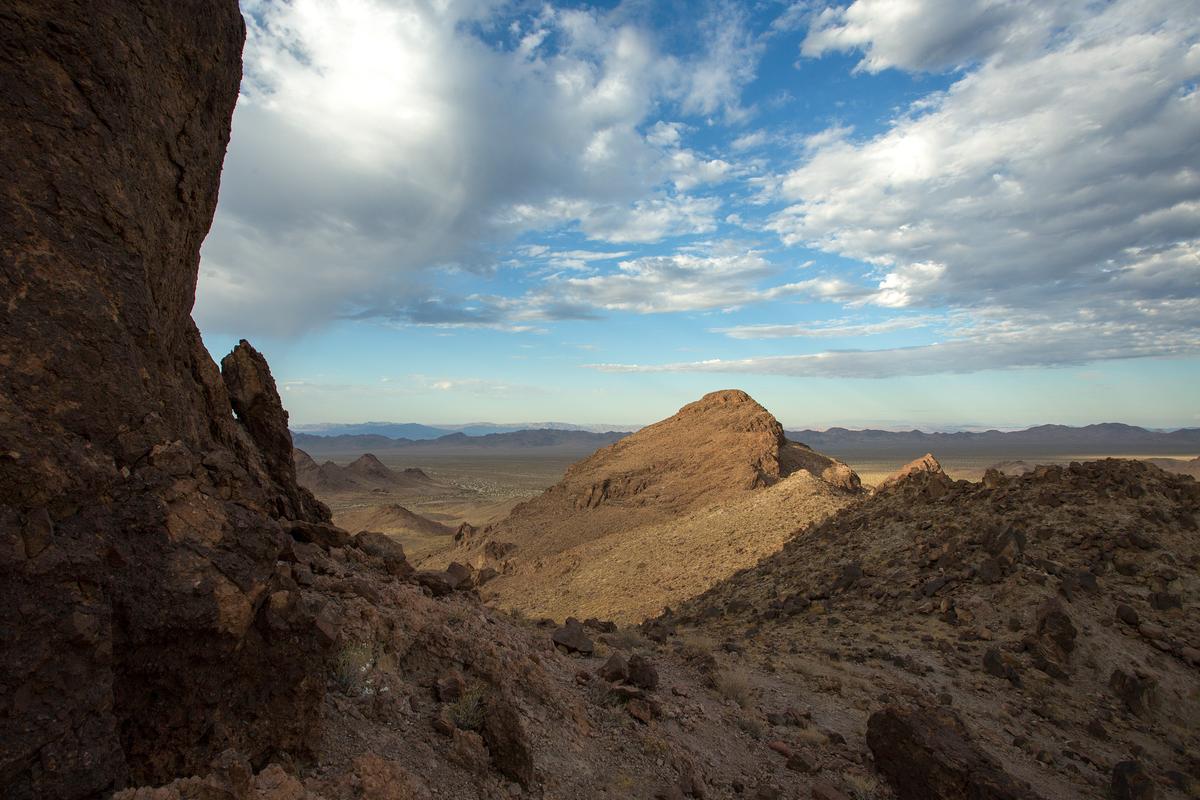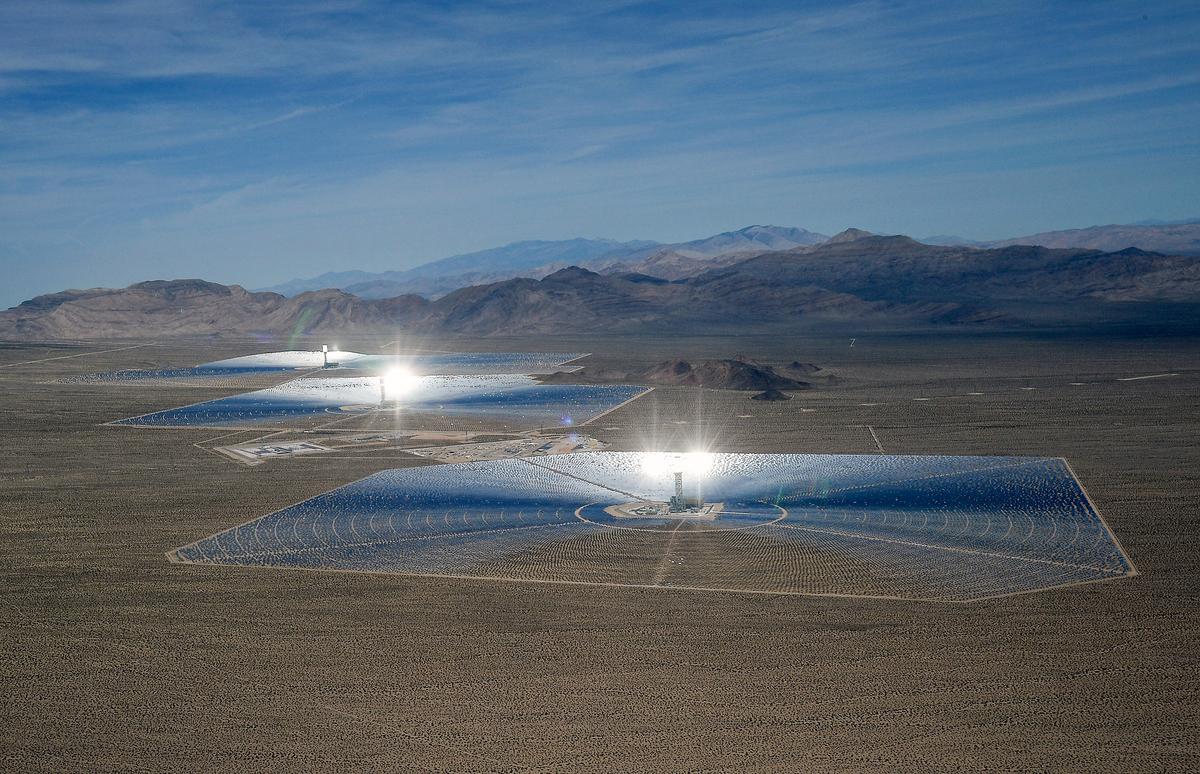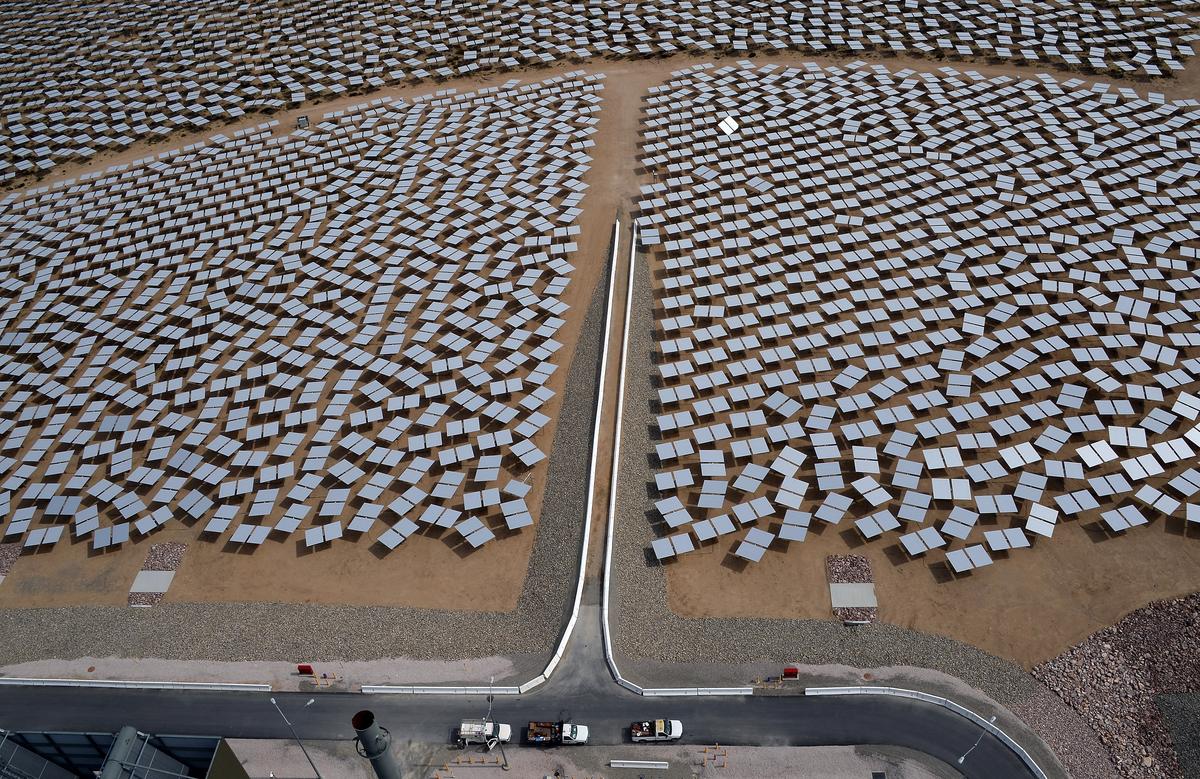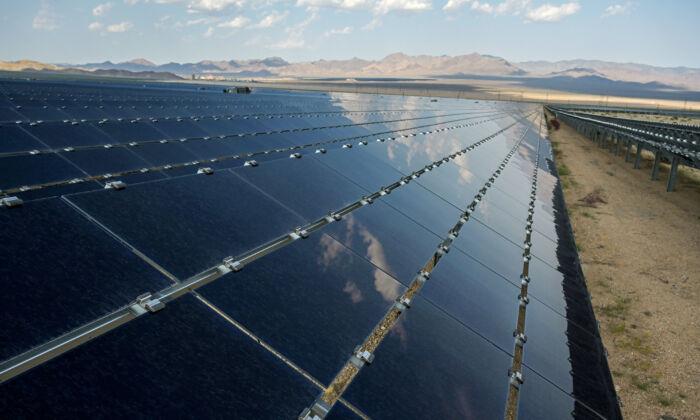The solar land rush, Kevin Emmerich said, first hit the desert under President Barack Obama.
“He really wanted to put a lot of large-scale green energy on public lands,” Emmerich, a former field biologist and National Park Service ranger, told The Epoch Times.
He and his wife, field biologist and artist Laura Cunningham, soon realized that arid land in the United States’ southwestern deserts—particularly the Mojave Desert and the Great Basin—was at risk of being taken up by utility-scale solar.
In 2008, they formed a nonprofit, Basin & Range Watch, to resist what they saw as encroachment.
Emmerich says much of the struggle involved pushing back against the Bureau of Land Management’s (BLM) designations, which often identify the prospective sites of large solar farms as non-scenic. Under BLM’s Visual Resource Management (VRM) classification scheme, such areas are often slotted in the lowest class, Class IV.
“In the Mojave Desert, the perception of that is changing,” Emmerich said. “As the population grows, and as people are more mobile and drive out there from the bigger cities, fewer and fewer people actually believe there’s nothing else there.”

Today, the Biden administration is contemplating a rule change reminiscent of moves under the Obama administration.
As with its response in 2008, Basin and Range Watch is opposed to this change and what it suggests about the government’s attitude toward the industry.
“We’re giving them a break because they’re the sacred solar developer,” Emmerich said.
He thinks the new standard could also create a precedent for a future administration to reduce the rates or fees for oil and gas exploration—something he also opposes.
While Emmerich’s concern about fossil fuel drilling isn’t uncommon in the environmental movement, Basin & Range frequently stands alone, or almost alone, when opposing solar and wind projects.
Many high-profile environmental groups are willing to see habitat taken up by solar, he said, “because it’s going to be impacted by climate change anyway.”
The Sierra Club, meanwhile, endorsed BLM’s Desert Renewable Energy Conservation Plan (DRECP), which could see hundreds of thousands of desert acres set aside for solar and wind energy projects.
BLM officials didn’t respond by press time to a request by The Epoch Times for comment. The Epoch Times also sought comment on the BLM’s proposal from multiple environmental organizations, including the Sierra Club and the Wilderness Society.

Low Power Density, High Impact on Habitats
Scott Cashen, a field biologist in California who consulted on renewable energy projects, shares Emmerich’s concerns about the conservation of desert land.“There was this big push to need a lot of big parcels of land, and the easiest place to look was in the desert,” he told The Epoch Times. “The desert was just getting destroyed. The first step is to come in with heavy equipment and scrape the site clean of anything living.”
One fundamental issue with solar power, Cashen said, is the need for large swaths of land. This suggests a much lower power density than natural gas, nuclear, or other conventional power sources.
Nuclear power clocked in at a power density of 240.8 watts per square meter, more than 42 times higher than utility-scale photovoltaic solar; while coal power, at 135.1 watts per square meter, had almost 24 times its counterpart’s power density.
Smil projected that the conversion to renewable energies would require a staggeringly large power infrastructure, “spread over areas 10 to 1,000 times larger than today’s infrastructure of fossil fuel extraction, combustion, and electricity generation.”
“Higher reliance on renewable energies may be desirable ... but inherently low power densities of these conversions will require a new system of fuel and electricity supply that will be able to substitute for today’s dominant practices only after decades of gradual development,” Smil wrote.
“With that land area, we’re talking about massive amounts of habitat loss, and habitat fragmentation and degradation in general,” Cashen said.
In addition to the panels themselves, the disruptive new infrastructure for utility-scale solar might include everything from new substations and roads to miles of additional transmission lines, a challenge that’s intensified if the solar installation is relatively far from the communities it serves.
“People still think, ‘Oh, that product is made from 100 percent solar energy, I can feel good about buying this,’” Cashen said. “But that solar energy facility involved destroying thousands of acres of pristine desert environment. People just don’t know.”

Emmerich echoes Cashen’s comments on power density.
“The impact of a solar project is almost laughable to us, simply because it’s low-density energy.”
Cashen points out that the additional transmission lines increase the risk of fire, especially in wildfire-prone parts of California.
“California law requires a four-foot clearance around powerlines in areas at high risk of fire. For that reason, the significant new transmission infrastructure required for utility-scale solar can result in significant tree loss.”
The new transmission lines required for utility-scale solar also increase the risk of bird collisions, exacerbating the major threat to avian life posed by solar installations themselves.
Solar power tower designs—a less common type of utility-scale solar design in which mirrors concentrate solar rays on a single point—can melt birds, butterflies, and other living things that are unlucky enough to stray too close.
California’s Ivanpah Solar Plant, located in the Mojave Desert, has been estimated to kill 6,000 birds per year, as of 2016.
While the issues with solar power towers were predictable, Cashen said that bird deaths linked to photovoltaic panels, the more common design in large-scale solar farms, came as a surprise.
“The more people started looking, the more dead birds started showing up at these photovoltaic facilities,” he said. “It’s to the point now that if you look, you’ll find it.”

Sparrow hawks, Western grebes, Virginia rails, American coots, and scores of other species have all been spotted dead or dying at industrial solar facilities in America’s deserts.
The rapid installation of new renewable energy facilities raises another question: Are governments and companies rushing to build new large-scale solar farms doing all they should to protect animals displaced by those projects?
Last year, after the rapid approval of Nevada’s Yellow Pine Solar Project, wildlife biologists moved more than 130 desert tortoises, a threatened species under the Endangered Species Act. Thirty of the relocated tortoises were killed, possibly by predators in their new environment after relocation stress made the reptiles vulnerable. Emmerich said the incident brought his organization welcome attention.
The developer of Yellow Pine, NextEra Energy Resources, didn’t respond by press time to a request for comment.
Cashen and Emmerich note another troubling phenomenon.
That water, as well as the shade from the solar panels, could attract lizards, snakes, and other animals. Those very features, Cashen says, can make the panels an ecological trap. The lizards are often run over by the water trucks, while bird nests near the panels may be subjected to scorching temperatures that fry the eggs.
Emmerich said the application of water to control dust has often failed to work.
“If you’ve been out here in the summertime, you know how hot it is and how quickly water evaporates,” he said, adding that the disrupted earth can give rise to dust devils.

Some Resistance Successful
Although opponents of utility-scale solar have often faced an uphill battle, they have scored some victories.In rural Vermont, the removal of habitat for bobolinks and other grasslands had been a frequent point of contention, according to Annette Smith, executive director of Vermonters for a Clean Environment (VCE).
Yet while many controversial projects have progressed, in 2015, Green Mountain Power failed to secure approval for a proposed 19,000-panel array on a prison property in Windsor, Vermont.
“The site was well known to be excellent grassland bird habitat,” Smith told The Epoch Times.
Allen Palmer, an official with Vermont’s Division of Property Management, previously wrote in an email to other Vermont officials that whoever represented the state at the hearing on the project should “let the people vent.”
“Unfortunately, it may be too little too late,” Palmer wrote, according to correspondence obtained through a public records request and shared with The Epoch Times.
“The project was dropped,” Smith said.
Smith, who said she had been living off the grid using solar and propane since 1989, expressed skepticism about the BLM’s proposed rule change, which would lower costs for renewable energy companies operating on public land.
“This industry is heavily subsidized and getting tax breaks everywhere,” she said. “We’re just looking at more centralized power.”
Officials from Green Mountain Power and the State of Vermont didn’t respond by press time to a request for comment.
Emmerich is proud of his recent successful effort to halt the enormous Battle Born Solar project, which would have claimed roughly 14 square miles of Nevada desert and been the state’s largest solar farm.
“You can see beautiful mountains, and there’s a lot of history and archaeology up there,” he said.
Arevia Power, which proposed the project, didn’t respond by press time to a request for comment.
Cashen is concerned that the environmental downside of solar power isn’t fully understood. He speculates that, in the not-so-distant future, much of America’s desert land could end up littered with the toxic, abandoned remains of old solar farms.
“All these things are so new,” he said.




